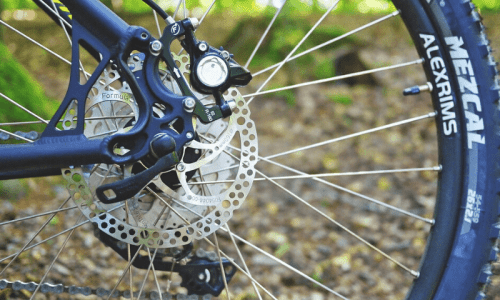When it comes to cycling, looking after your equipment is vital. As a very experienced cyclist and someone who has been lucky enough to work with some incredible cycling equipment companies, I have learned a lot about proper care.
One mistake I see so many cyclists make is not looking after their equipment as required, and it fails them. One piece of equipment you want to ensure you look after more than anything else is your helmet.
There’s actually a lot to think about when it comes to storing your helmet. In this article, we will be telling you everything you need to know by discussing all the factors around how and where to store your bike helmet and then giving recommendations.
- What Is A Helmet Made Of?
- The Factors That You Should Be Considering With Helmet Storage
- Recommend Storage Solutions
What Is A Helmet Made Of?
Before we start telling you how to store a helmet, it’s good to understand what a helmet is made of. There’s a lot more to a helmet than you might think, here’s what you need to know:
Outer Shell – Typically a hard metal plastic called polycarbonate. Perfect for lightweight applications and protecting surfaces.
Inner Foam – Generally Expanded Polystyrene, but in high-end models, you get Multi-Density foam. This absorbs the energy in an accident.
Comfort Pad – This will be made of light foam and will be there to cushion and make the helmet as comfortable as possible.
Retention System – The retention system includes all the straps and the cage holding the helmet onto your head. They are typically made from nylon or polyester webbing. Some come with extra protection called MIPS.
Visor – Mainly on mountain bike helmets, the visor is there to stop the sun and can also add extra protection.
It’s important to mention that helmets that hit the shelves must undergo rigorous testing. The safety standard of helmets in modern times is incredibly high.
If you encounter a helmet that hasn’t been tested, we recommend walking away and not using it.
The Factors That You Should Be Considering With Helmet Storage
Now, let’s speak about the factors that are worth considering when it comes to storing a helmet. Here’s what you need to know:
Indoors Or Outdoors
The first factor to mention is indoors or outdoors. There’s no denying that you should always store your helmet indoors.
A helmet stored outdoors against all the elements is just going to perish and not going to be able to protect you.
Many factors from the outside heavily affect the longevity of a helmet, such as sunlight, temperature, and much more. We are going to discuss these in further detail next.
Sunlight
Another important factor to mention is sunlight. A very big problem when it comes to storing a helmet in the sunshine is that it can weaken some of the materials, making it much less effective when protecting your head in an accident.
We recommend keeping a helmet in a place outside of direct sunlight. Although helmets are designed with UV protection for outside under constant exposure, they can weaken. So, when it comes to storage, we recommend a dark place.
Out Of Harm’s Way
It’s very easy to pop your helmet into a storage closet, which is used for many different uses, and it gets knocked around a lot. This isn’t only bad for the helmet and could weaken its structure, but it also causes scratches, which can take away the UV protection of the paint.
It’s really easy to assume because a helmet is made for protection, it is very resilient when a few bad storage knocks can hugely weaken the structure of the helmet itself. Many helmets people are using are much weaker because of poor storage.
Temperature
Another very big factor is temperature. If a helmet is stored in a place that is too hot, it can damage the structural integrity of the protection, and the same goes for too cold. Leaving your helmet on a boiling radiator doesn’t show damage, but it will be weaker in an impact.
The same goes for leaving the helmet in a place too cold. Many riders leave their helmet in an outdoor shed, which can make some of the helmet’s materials brittle and prone to cracking much easier than they should. We highly recommend room temperature for the best longevity.
Recommend Storage Solutions
When finding the perfect place to put a helmet, here’s what I recommend.
Cupboard Shelf
The first place I highly recommend is in a cupboard on a shelf up high. This means it can be fully out of the way of other storage, out of the way of sunlight, and at a good temperature. This is my personal favorite.
Storage Room Indoors In A Bag
When you buy a helmet, you will often notice that it comes with a bag. This is not typically because the company wants to offer more but because it is how they recommend you store it indoors.
Hanging On A Door Rear Hook
If you are short on space, another great place you can store a helmet is on the back of a door. I used to hang mine up behind a door because it kept it out of danger, but I would have it in a storage bag because it was a well-lit room.
A Final Note
Storing your helmet is not just important to keep it safe, but it’s also going to keep it working better in the event of an accident. We highly recommend finding a suitable place in your home and keeping it in tip-top condition.
Also, remember helmets have a shelf life and should be changed when the manufacturer recommends them.

Robbie Ferri has spent years working in a bike shop, has worked with industry leading brands on product creation, has been a semi pro athlete, and is a fully qualified strength and conditioning coach. He has broken World Records, bikepacked all over the World and raced ultra distance at a top-level.






